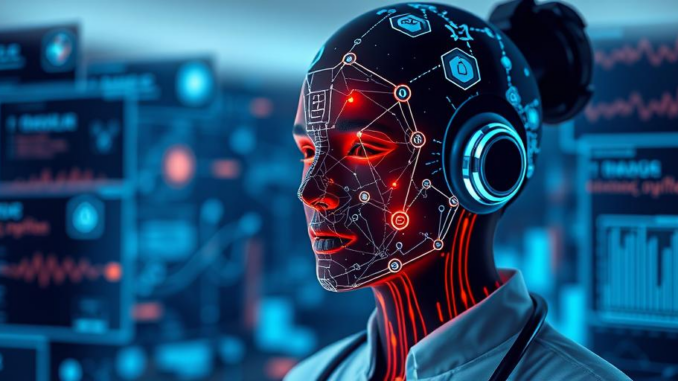
Summary
This article explores the groundbreaking AI system, LILAC, and its potential to transform medical image analysis. LILAC’s ability to detect subtle changes in longitudinal image series and predict outcomes offers exciting possibilities for various medical applications. The system’s adaptability and sensitivity promise advancements in diagnostics, treatment planning, and patient care.
Healthcare data growth can be overwhelming scale effortlessly with TrueNAS by Esdebe.
** Main Story**
Okay, so AI is really changing the game in medicine, isn’t it? We’re seeing some incredible advancements, and one that’s really caught my eye is this AI system called LILAC. It stands for Learning-based Inference of Longitudinal imAge Changes, and it’s developed by some smart folks over at Weill Cornell Medicine, Cornell’s Ithaca campus, and Cornell Tech. What it does, and it’s pretty impressive, is analyze medical images taken over time to detect even the smallest changes and, get this, predict patient outcomes. Amazing, right? Basically, it’s using machine learning to unlock insights from time-series images.
LILAC’s Wide-Ranging Impact
What’s cool about LILAC is how versatile it is. I mean, you can apply it to so many different things. They’ve shown it works with developing IVF embryos, healing tissue after wounds, and even aging brains. And because it’s so sensitive, it can spot tiny differences between images taken at different times. This gives doctors way more detail for tracking how a disease is progressing or how well someone is responding to treatment. Plus, the fact that it can predict outcomes? That’s huge for personalized medicine. They’re even using it to predict cognitive scores from brain scans, which could really help us understand and manage neurological stuff better.
Speaking of brain scans, I remember one project I worked on where we spent ages manually analyzing brain MRIs. It was incredibly time-consuming and, frankly, prone to human error. Something like LILAC would have been a game-changer.
How LILAC Beats Traditional Methods
Now, if you’ve ever dealt with analyzing longitudinal image data the old-fashioned way, you know it’s a pain. You end up doing all this complex customization and pre-processing. It eats up so much time and resources! But LILAC? It streamlines everything. It doesn’t need all that customization and pre-processing. This is, and I think you will agree, really important. This means more people can use it without needing a ton of expertise. It also spots those super subtle changes that traditional methods just miss. That, in turn, gives doctors more comprehensive info to work with when they are making decisions, it’s really a no brainer!
Think of it this way: it’s like comparing a modern digital camera to an old film camera. Both can take pictures, but the digital camera is faster, easier to use, and gives you a much clearer image.
The Future of Healthcare
Look, LILAC is more than just a small step forward. It’s a real leap in medical image analysis. Its sensitivity, flexibility, and predictive powers could totally transform how we diagnose and treat patients. Early intervention, improved outcomes—that’s what we’re talking about here. It’s not just an incremental change, but a whole new way of thinking about medical images. And as AI keeps getting better, systems like LILAC are only going to become more vital in making healthcare more personalized and proactive.
I really think that these kind of AI tools will become commonplace. What do you think?


LILAC? Predicting patient outcomes from images? Suddenly, my ability to predict what I’ll have for dinner based on fridge contents feels… inadequate. If it can spot subtle changes, I wonder if it could detect when my houseplants are *pretending* to be healthy!
That’s a hilarious comparison! The potential for LILAC to analyze living things extends beyond just humans. Perhaps one day, we’ll have AI diagnosing plant ailments with incredible accuracy, saving us all from wilting woes. It would be interesting to see what it thinks is going on behind those leaves!
Editor: MedTechNews.Uk
Thank you to our Sponsor Esdebe
LILAC’s ability to streamline image analysis and reduce the need for extensive pre-processing is a significant advancement. The potential for wider adoption across various healthcare settings could democratize access to advanced diagnostics and personalized medicine.